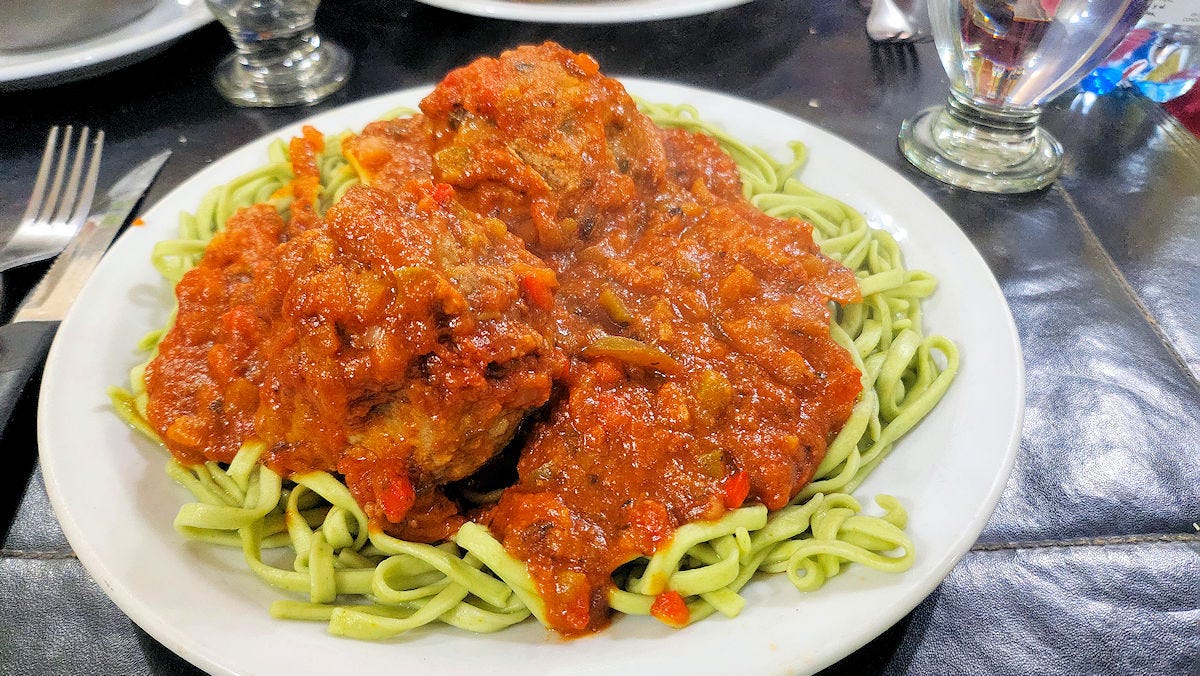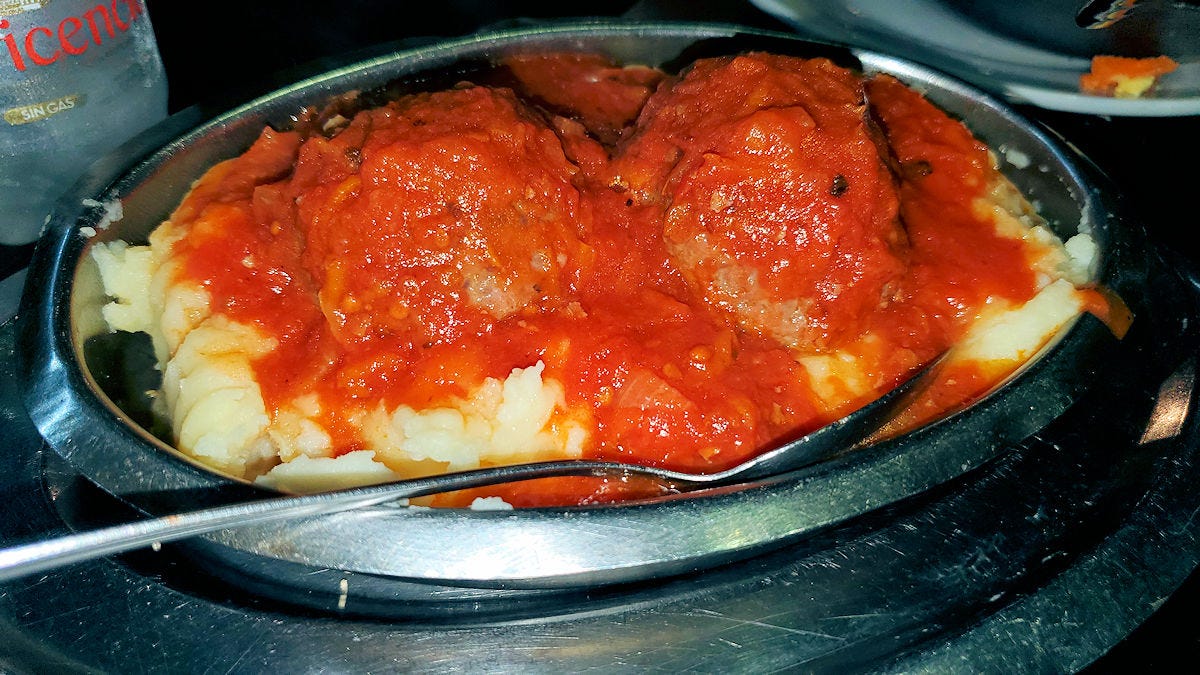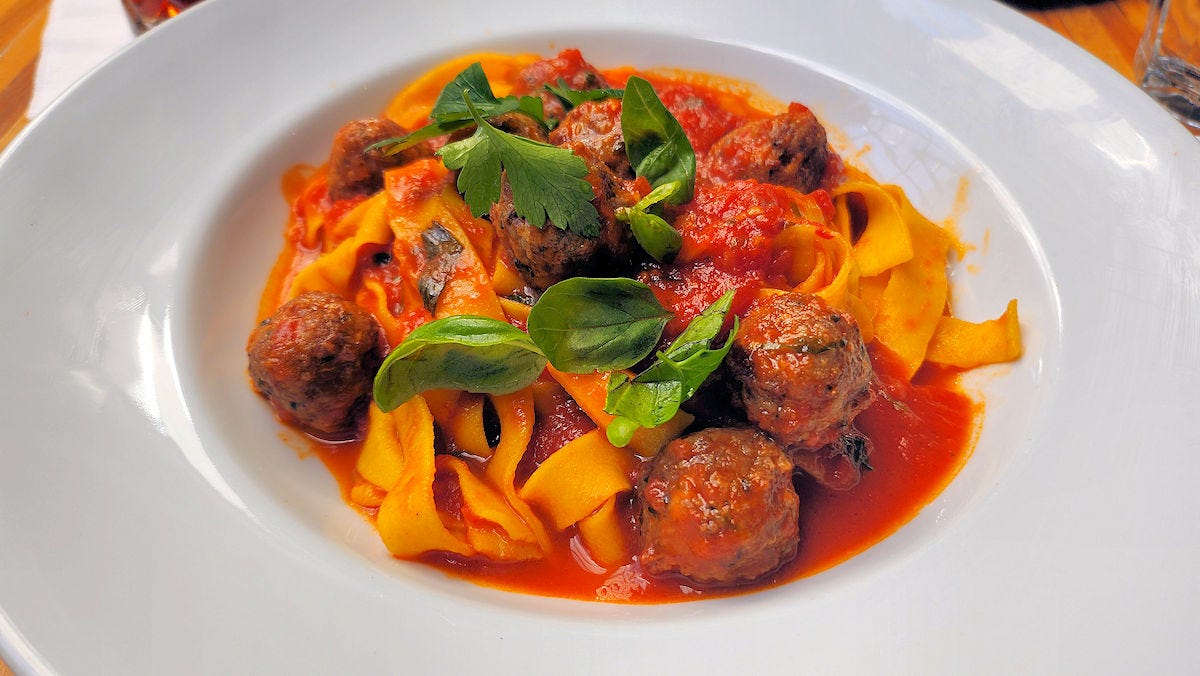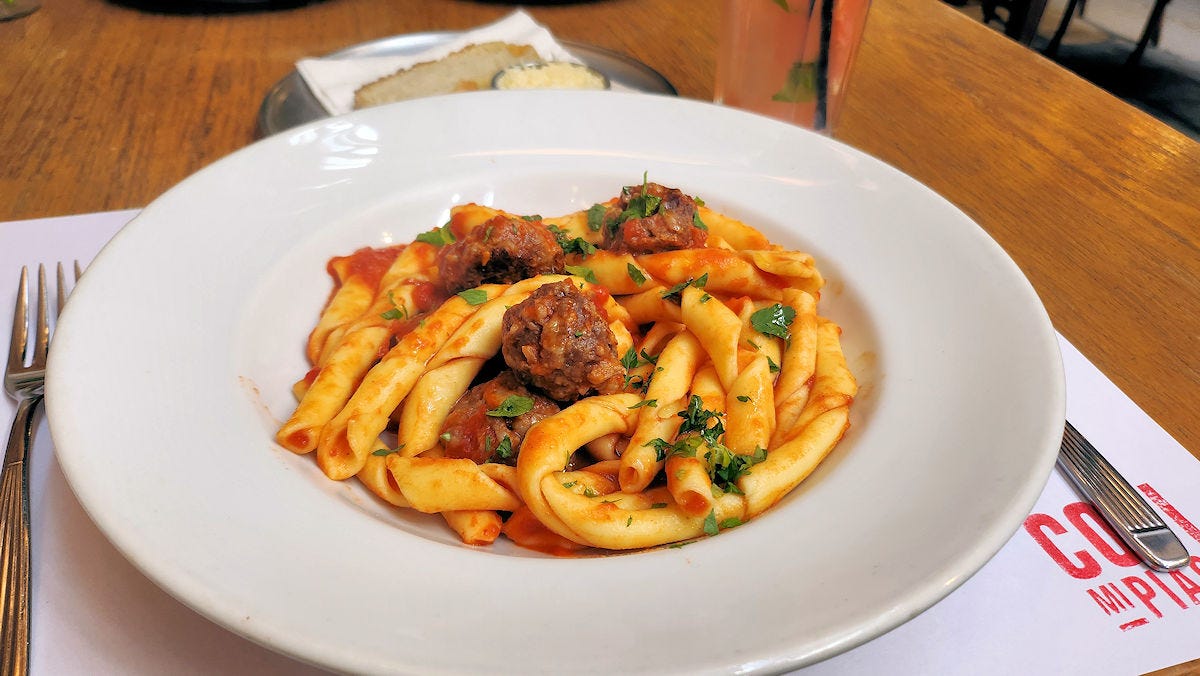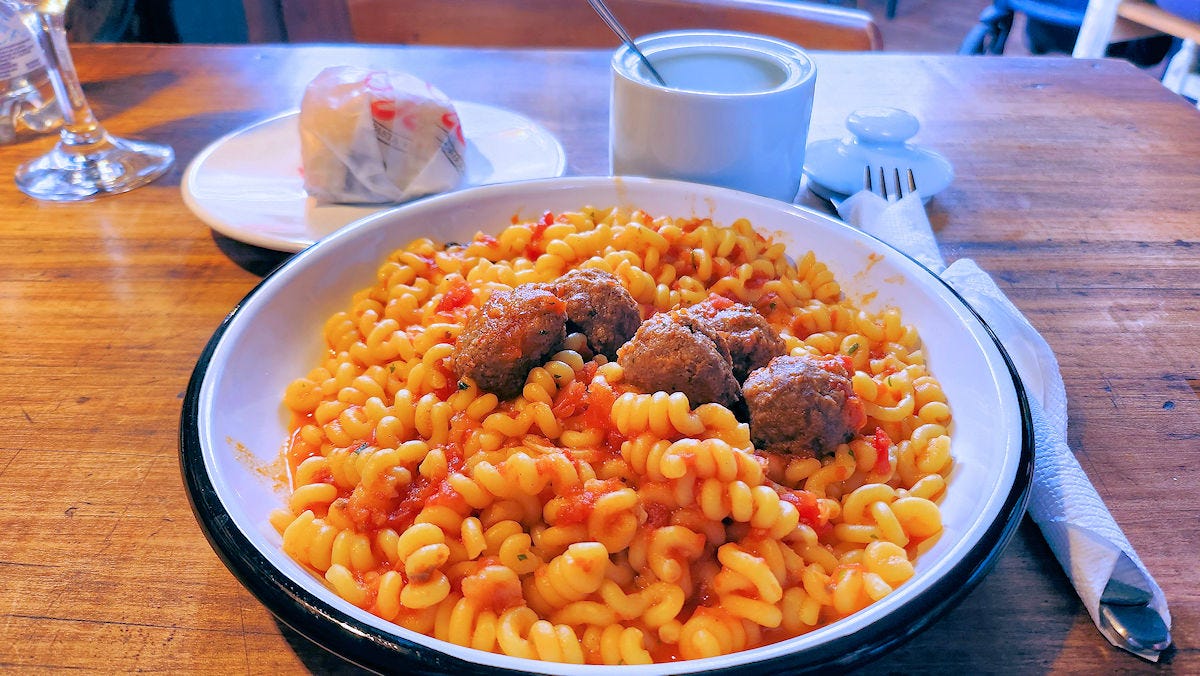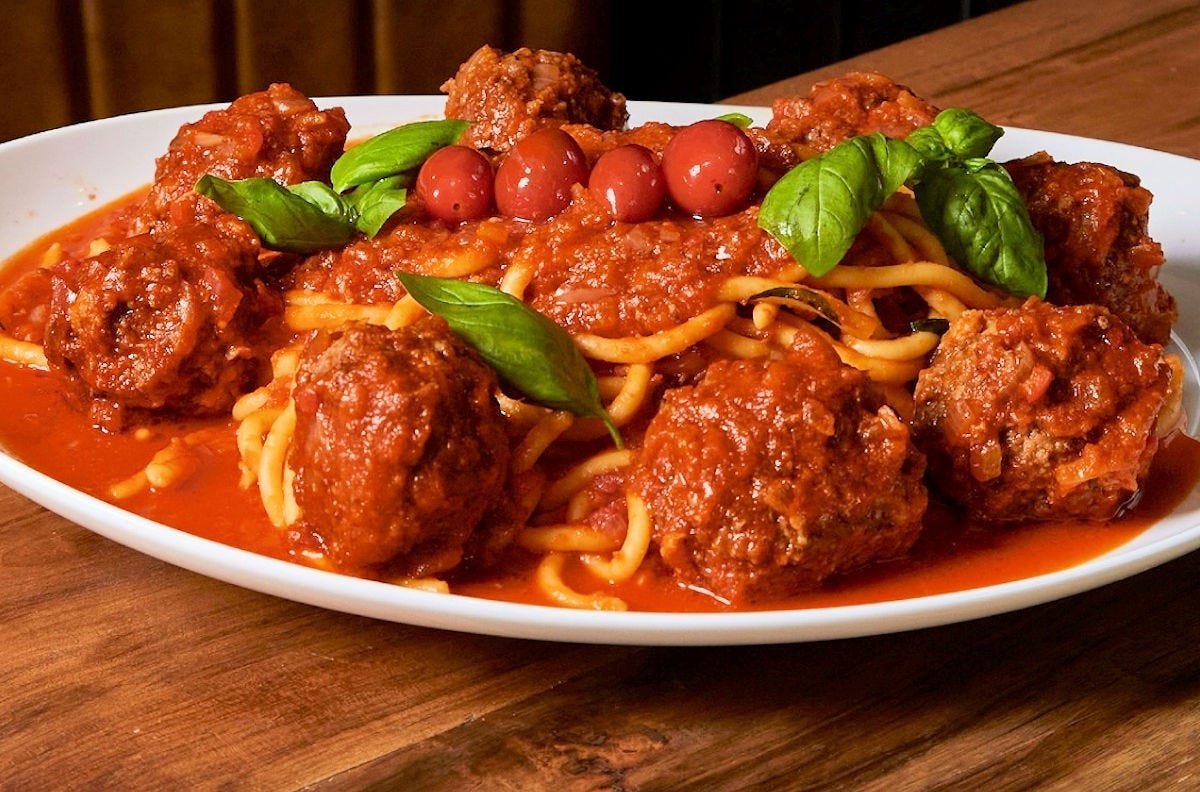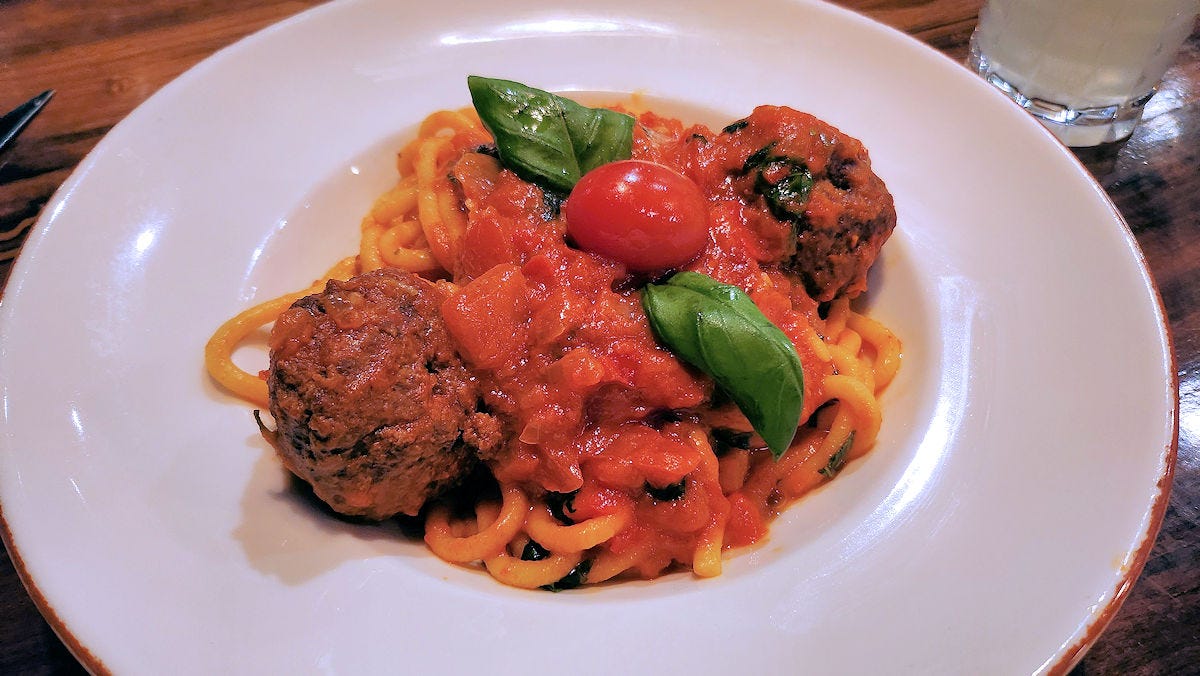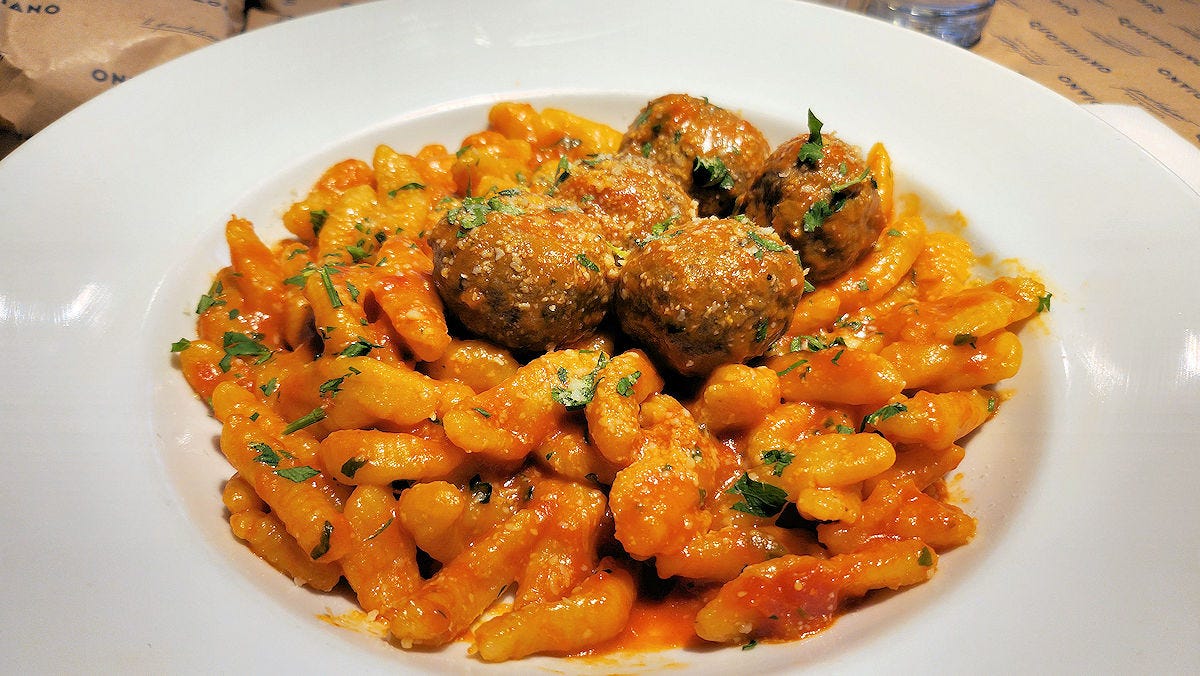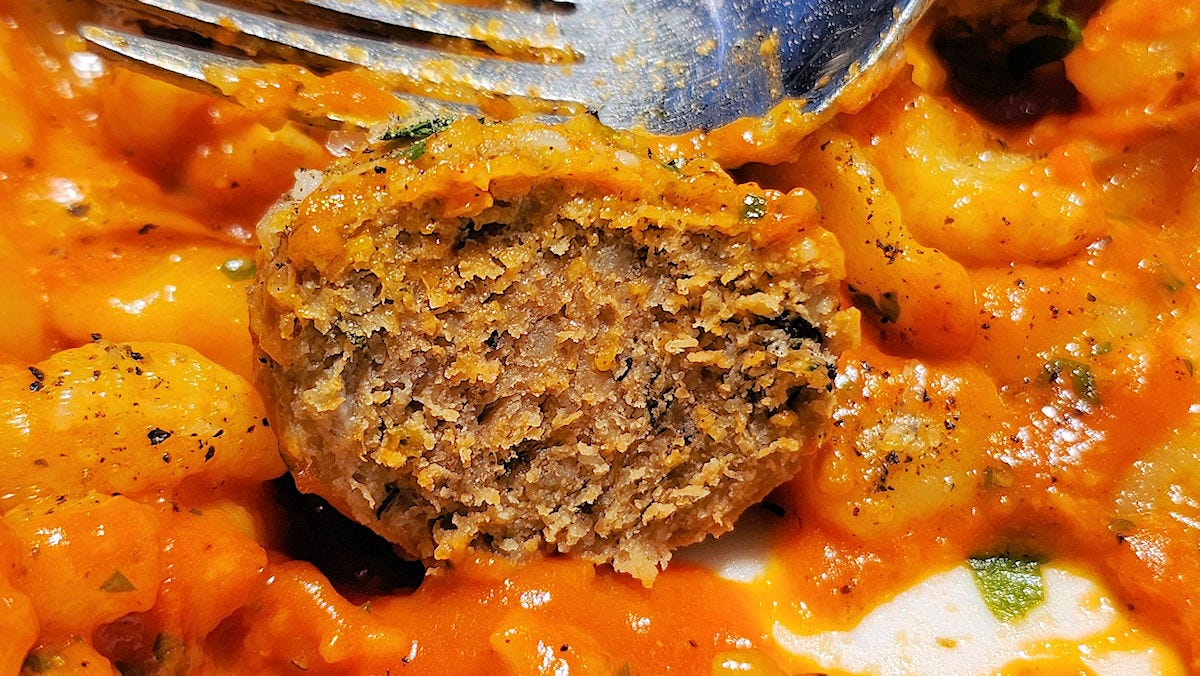The First Roll of the Meatballs
In which I sample meatballs good, and bad, so you don't have to
The earliest known written meatball recipes can be traced back to ancient Rome, where the 1st-century cookbook "Apicius" included several meatball-like dishes. Evidence, however, suggests that the concept of rolling ground meat with spices and other ingredients likely originated in ancient Persia, in the form of kofta. These early meatballs were often made with lamb and seasoned with a variety of spices, then glazed with egg yolk and saffron. Over time, meatballs spread across Europe and Asia, evolving into numerous regional variations.
A great meatball starts with the right mix of meats, often a combination of beef, pork, veal, or lamb, to give a rich flavor and tender texture. Keeping the mixture cold is crucial to prevent the fat from melting before cooking, which helps maintain the meatballs' structure. Adding moisture through ingredients like eggs and breadcrumbs soaked in milk ensures the meatballs remain juicy and soft. Seasoning is, of course, key - fresh herbs, garlic, and grated cheese can elevate the flavors. Finally, handling the mixture gently - not “overworking” the mixture - when forming the meatballs prevents them from becoming tough and rubbery.
Old school bodegones in Argentina tend to serve meatballs, with a tomato sauce, over or on the side of, either mashed potatoes or rice. Now and then, polenta. The Italian-American spaghetti and meatballs is available at many places that have pastas, but it’s not unusual for them not to. I’ve set out to explore a variety of styles and presentations, because, who doesn’t like meatballs? Even vegetarian and vegan cuisines are rife with meat-substitute-balls, though I’m not going to be exploring those, at least not right now.
Let’s start close to home, at my neighborhood go-to comfort food spot, El Rincón, Uriburu 1759, in Recoleta. Until recently, I’d not tried their meatballs over pasta - green tagliolini is their offering, though you could probably get them over any of their pastas.
Instead, I’ve always gotten a smaller, simpler plate of a couple of the meatballs, with sauce, over mashed potato. And, at least at El Rincón, they’re better that way. The pasta they use is too commercial, and tastes it. The meatballs themselves are excellent. They’re large, a good two inches across, they’re tender, well spiced, and the tomato sauce is packed with onion and garlic. Either version runs about 12000 pesos, or about $9. The place is a proverbial hole-in-the-wall, and service is variable - we tend to get pretty good service these days because we’re regulars, but not everyone does.
The internet being the wide-ranging font of information that it is, good and bad, I did some searches for “best meatballs” in Buenos Aires, in both English and Spanish. Tana, Castañeda 1885 in Bajo Belgrano, popped up on a couple of lists. A roughly two year old Italian restaurant from chef Gonzalo Sacot, formerly of El Quinto Cocina Asiatica, I’m guessing this is more a return to his roots. Tagliatelle con Polpettines, offers the small, Italian meatballs that are the pre-cursor to Italian-American meatballs. They’re flavorful, but I found them to be pretty dense and almost chewy, like they didn’t have any egg, or soaked breadcrumbs in them, to lighten them up. The tomato sauce was fresh and light, perhaps a touch acidic, but a sprinkle of salt balanced that out. The pasta kept breaking apart when trying to pick it up with a fork - it wasn’t overcooked and mushy, it was fragile - a spoon would have been better than a fork. If I were to guess, the dough wasn’t laminated by folding it over a few times to help create a bit of structure. Disappointing. 13800 pesos, or just a shade over $10. Servers were friendly, and pretty darned cute and flirtatious.
At one of my favorite pizza places in town, serving Roman style thin crust pizzas, they also offer pastas. I’ve not tried any of them before, because the pizzas are just too tempting. Cosi mi Piace, El Salvador 4618, Palermo is the spot. Do go there for the pizzas. Here, for pasta, as at most places in Buenos Aires, you pick your pasta, you pick your sauce. I went with their hand-rolled fusilli al fierrito, rolled around a dowel or skewer. The pasta - pretty much perfect, though a fairly small quantity. The sauce, delicious. The meatballs, great flavor, but jeez, there are only four tiny little 3/4” meatballs on the plate, for which they charge a whopping 9800 pesos (that’s just for the meatballs, the pasta is 7600 pesos) - combined that’s $13 for what feels like an appetizer portion, a primo piatto, albeit delicious. Good as it was, I’ll stick with the pizzas in the future.
Now, while technically correct that these are a form of fusilli, most folk would probably call these cables di teléfono, but let’s go with fusilli, since that’s what Oggi Pasta e Birra, Gorriti 5802, in Palermo, calls them. They also have a location in Belgrano at Av. Juramento 2471, and a food truck that shows up at street fairs regularly. They offer a choice of ten different pasta shapes, and then you pair those with your choice of one of nineteen sauces. The Don Ettore is a tomato sauce and meatball combo (pasta + this sauce including five meatballs, 14650 pesos, $11), you can also order extra meatballs - four for 4800 pesos, a bit steep at almost a dollar a meatball for these tiny ones. They’ve got decent flavor, though the tomato sauce could use some seasoning, and thickening up, it’s a little watery, and I ended up using not just cheese, but a fair amount of salt and pepper. The pasta itself was good. It’s all “fine”, and it’s a cute place, with friendly service.
Now, seeing that photo on the online Instagram menu had me looking forward to a whopping plate of “American style” meatballs and spaghettone that I figured on having to take half of it home with me. And that would fit the 17600 peso, $13, price just fine at Puny Pasta & Grill, Av. Corrientes 1269 in the middle of the theater district. But, the reality was… less than.
We’ve dropped from eight to two meatballs, and a big plate of pasta to a medium sized bowl - there’s more rim to it than bowl. The pasta itself was the only part of the dish that was really good, and cooked right. The sauce was an okay chunky tomato sauce, with a single cherry tomato atop, so we’re keeping with the same ratio between the menu photo and the reality, 4:1. The meatballs were just wrong. They’re way too finely ground, and hard as a rock. There is no excuse for having to use a knife to cut through a meatball. They were also totally unseasoned, as best I could tell containing nothing but ground meat. Between the false advertising, perfunctory service, and the food quality, there’s nothing to recommend here.
Ending, I guess, on two negative reviews, there is just nothing about this last plate that I could recommend. And surprising, too, because the pastas at the various locations of Quotidiano, this one the original at Av. Callao 1299 here in Recoleta, are usually good. Not wow, but good. Here, the cavatelli con meatballs (why the mix of Italian and English?) were, for me, inedible. The cavatelli themselves had the texture of gummy bears, the sauce, a weird orange color, sickly sweet, and clingy like it had been thickened with too much flour or starch, reminded me, unpleasantly, of the sauce in a can of SpaghettiOs. And the veal meatballs…
…a texture I’d rather not think about, weirdly hard and chewy, and very strangely spiced. I couldn’t even identify what the spice was in them. Looks to be a way too finely ground mixture of meat and… carrot? It is rare that I just push a plate away after a few bites and call for the check, but sometimes, you just know it’s time to throw in the towel. 15300 pesos, or about $11.50.
So where are we at after this first round of half a dozen? Despite the price, there’s no question the best meatballs and pasta in this round were the fusilli at Cosi Mi Piace, though I’m more likely to head to our neighborhood bodegón, El Rincón, for their quite good meatballs atop mashed potatoes.


